
Made for ultralight backpacking and mountaineering, the Xenith III offers a seriously impressive level of insulation for its minimal weight, making it perfect for the bigger mountains during summer, and at UK altitudes in spring and autumn. In this 12-month test, Tom Ripley enjoys comfortable nights in the Alps, Nepal, and New Zealand.
I've been using the Xenith III for over a year now, with nights spent bivvying in the Alps, trekking in Nepal, and winter alpine climbing in New Zealand's Southern Alps. For a sleeping bag with a fill weight of only 373g, I've been seriously impressed with how warm it is—especially as that hasn't been achieved at the expense of length or cut. After more than 60 years of making down gear, Mountain Equipment clearly know what they're doing, and have brought all this expertise to the Xenith III.
Weight, packability, warmth, and performance
A pinnacle piece in ME's well-named Extreme Light Range, the Xenith III has a fill weight of 373g and a total weight of just 690g. For backpacking and mountaineering it is superbly light for the warmth on offer, and packs down very small.
ME give it a comfort rating of –2°C, a figure I'd usually be cynical about. However, I recently spent four nights camping on snow in The Remarkables where it was noticeably colder than that, and I was warm and comfortable throughout. In this case, my cynicism was misplaced. I'd say Mountain Equipment's temperature rating is conservative. For its weight, this must be one of the warmest bags around.
The designers seem to have achieved something of a miracle: a light, genuinely warm bag that isn't restrictive in its cut. The Xenith III is long enough that I can sit up inside it with the hood up—handy if you're storm-bound in a hut or bothy—and roomy enough for my fairly broad frame. The cut is generous enough that I've even managed to squeeze an old PHD Minimus inside to boost warmth on really cold nights.
Down Quality
The Xenith III uses 900-fill goose down, which is about as good as it gets in terms of loft and warmth-to-weight ratio. It's not hydrophobic-treated down, but I personally think that's more gimmick than game-changer anyway, something that Mountain Equipment seem to agree on.
Fabric
Both the inner and outer use a 10D lightweight nylon, which is the same as the Oreus jacket's fabric. I haven't managed to rip it yet, but based on experience with the Oreus, I don't think it's particularly tough. I'd definitely recommend carrying repair tape on longer trips.
The fabric is extremely windproof but not especially water resistant. For use outside, I'd always pair it with a bivi bag. In a tent, though, I'd happily rely on it alone. A spilled mug of tea won't end well, but that's true of any down bag. For longer-term cold-weather camping—say, living on a glacier in Alaska for a month—I'd want something with a more water-resistant shell and a warmer fill.
Features
Some sleeping bags achieve a headline low weight by reducing features - the number and quality of baffles, for instance, or shorter zips - or by giving you a restrictive fit. But Mountain Equipment have cut no corners with the Xenith range, from the elaborate construction of its baffles, to its user-friendly cut and features.
In warmer weather it can be annoyingly cloying in a sleeping bag that doesn't unzip far enough. The Xenith III has a long YKK zip that goes almost to the end, letting you use it quilt-style in warmer conditions. You can also zip it to another bag—handy if you're sharing (romantically or otherwise).
Side note: I haven't tried this with the Xenith, but with other bags I've used a "pizza slice" mod (a trapezoid of nylon that zips in between two bags), which turns them into a double quilt. It's a huge weight saver if you're happy sharing one bag between two, though probably not something I'd use in a professional guiding context.
The hood is roomy, with a static drawcord that cinches around well. There's no shoulder baffle, which I actually prefer—I find them claustrophobic, fiddly, and not noticeably warmer in practice. At 180cm tall, the Regular length fits me perfectly, and the toe box design has kept my feet warm on all but the coldest nights; taller users have the option of a Long bag (£600).
The supplied stuff sack is a roll-top made of the same thin nylon. I was skeptical about its waterproofness, and since a soaked down bag can ruin your day—or your life—I swapped it for a lightweight Exped waterproof dry bag. Technically it fits in a medium dry bag, but I use a large to avoid wrestling with compression.
Verdict
The Mountain Equipment Xenith III is a very light, impressively warm, and superbly well-cut bag that balances performance with usability. It's not the most rugged or water-resistant option out there, but for alpine climbing, trekking, or lightweight mountaineering trips where weight and packability matter, this is a truly brilliant choice.

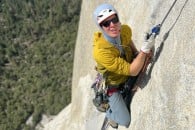










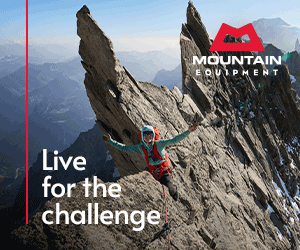










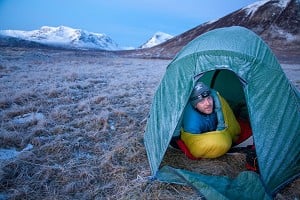

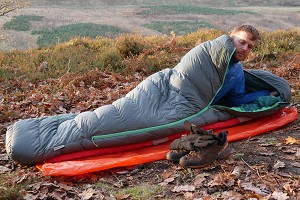
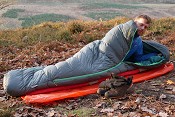
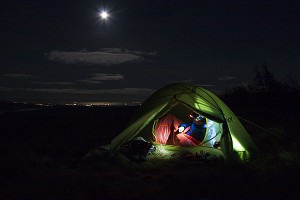
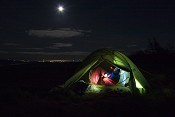
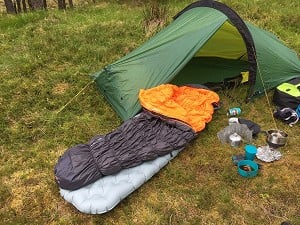
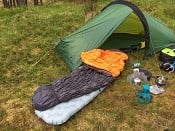
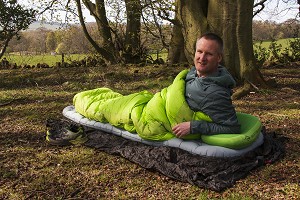
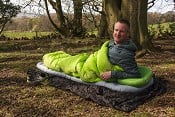

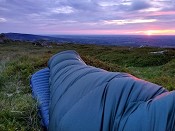
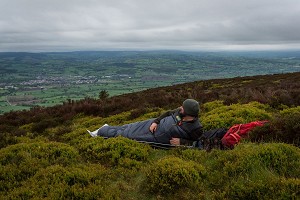


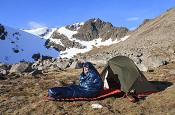




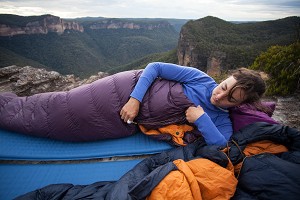
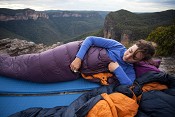
Comments